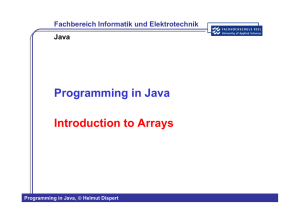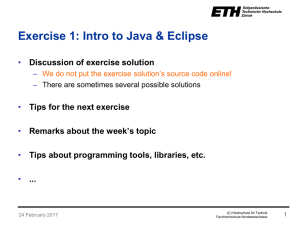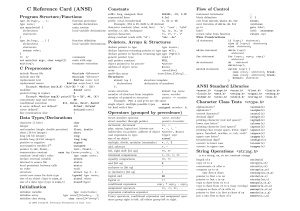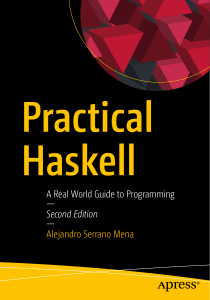Java Crash Course Part I
Werbung
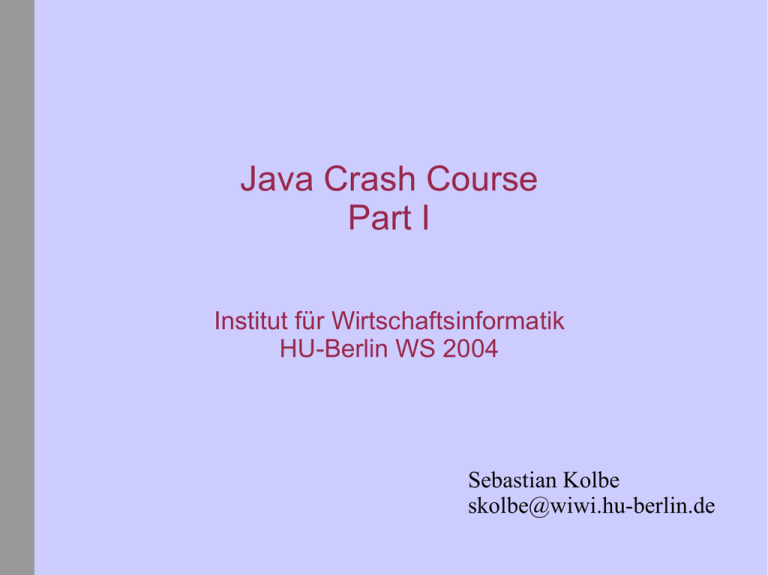
Java Crash Course Part I Institut für Wirtschaftsinformatik HU-Berlin WS 2004 Sebastian Kolbe [email protected] Overview (Short) introduction to the environment Linux in the computer lab Getting started with Java Your first Java-application Programming elements Variables Operators Predefined functions Environment Linux or MS-Windows In Room 025 only Linux! All exercises and homework in this course must be runnable under Linux For the exercises you will need Editor (e.g. emacs) System shell JDK Web browser (e.g. Konquerer or Firefox) (->later) Java Platform independent Widely known Industrial standard Easy to learn Object orientated Your first Java application Simple displays “Hallo Welt!” To create the program, you have to Write a java sourcefile e.g. HelloWorld.java Compile this sourcefile to a bytecode file e.g. HelloWorld.class Run the program with the Java-interpreter /* * The HelloWorld class implements an application that * simply displays "Hello World!" to the standard output. */ class HelloWorld { public static void main(String[] args) { System.out.println("Hallo Welt!"); // Display the string } } HelloWorld in detail Class declaration: Everything in Java is organized in classes. (Small logical unit which defines a set of variables and methods(routines)) By convention you declare one class per file and name that file the same. A comment: Everything between /* and */ will be ignored by the compiler. Comments are not important for computers but for humans! /* * The HelloWorld class implements an application that * simply displays "Hello World!" to the standard output. */ Single line comment: Everything after // will be ignored by the compiler class HelloWorld { public static void main(String[] args) { System.out.println("Hallo Welt!"); // Display the string } } Output: Write some characters Hallo Welt! on the screen The main method / routine: Every program need one 'main' routine, where it starts to perform instructions. At this time take the syntax as a fixed statement! Brackets and parenthesis: Every logical statement must be started and ended with curly brackets! Arguments to methods/functions/routines always uses parenthesis. Arguments are separated with commas. Be aware of case sensitiveness and the semicolon at the end of instructions! Your first Java application The Java compiler javac Translates the sourcecode into instructions that the Java Virtual Machine (Java VM) can understand (bytecode) Produces .class files from .java files sko@dussel:/home/sko > javac HelloWorld.java sko@dussel:/home/sko > Your first Java application The Java Virtual Machine (Java VM) Is implemented by the Java interpreter java Can understand bytecode files (.class) and executes them in a way your local computer can understand sko@dussel:/home/sko > java HelloWorld Hallo Welt! sko@dussel:/home/sko > Variables The smallest item of a program Can store data Each variable has: Type (what kind of data, e.g. int or String) Identifier (a name) Scope (characteristic that regularize access) (see lectures) Variables Declaration: int i; double epsilon; String greeting; Initialization: i = 3; epsilon = 0.02; greeting = “Hallo Welt!”; int j = 4; Using: i = i + j; // combined! Primitive data types Name byte short int long float double char boolean String Description Byte-length integer Short integer Integer Long integer Single-precision floating point Double-precision floating point One character Logical value (true or false) Text (a string of characters) Value -128 – 127 -32768 – 32767 -232 – 232-1 -264 – 264-1 2-149 – (2-223)*2127 2-1074 – (2-252)*21023 1 unicode char. true/false * String is not really a primitive data type, but can be used as one Operators Operator + * / ++ -% < > >= <= == != || && ! Use Op1 + Op2 Op1 – Op2 Op1 * Op2 Op1 / Op2 Op1 ++ Op1 -Op1 % Op2 Op1 > Op2 Op2 > Op2 Op1 >= Op2 Op1 <= Op2 Op1 == Op2 Op1 != Op2 Op1 || Op2 Op1 && Op2 !Op1 Description Add Op1 and Op2 Substract Op1 from Op2 Multiply Op1 with Op2 Divides Op1 by Op2 Adds 1 to Op1 Substracts 1 from Op1 Computes div remainder Op1 is less than Op2 Op1 is greater than Op2 Op1 is greater than or equal Op2 Op1 is less than or equal Op2 Op1 is equal Op2 Op1 is not equal Op2 Op1 or Op2 Op1 and Op2 Negates Op1 Predefined functions In Java exists a huge database of predefined routines and functions organized in hierarchic libraries Simple Output Use single routines with full path java.lang.System.out.println(“Hallo Welt!”); Prefix “java.lang” is omittable Example { int i = 7; double pi = 3.14159; System.out.println( "Hello World!" ); System.out.println( "PI=" + pi ); System.out.println( "i+pi=" + (pi + i) ); } Output: Hello World! PI=3.14159 i+pi=10.14159
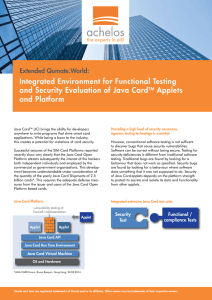
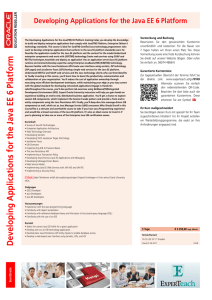
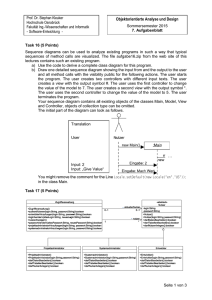


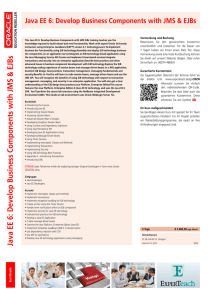
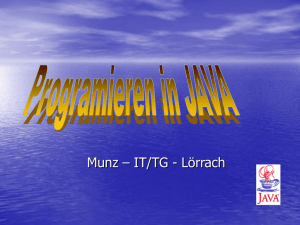
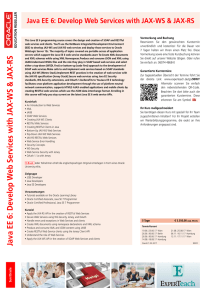
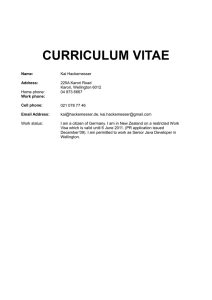
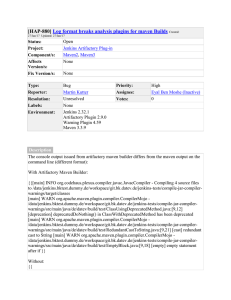

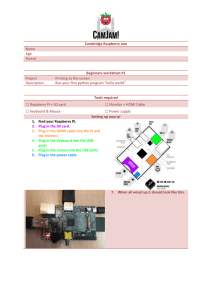

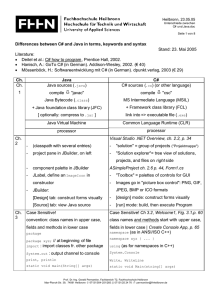
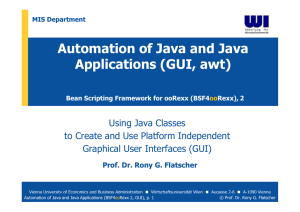
![[#BZANALYSIS-93] Simulating OpenWorkloads throws](http://s1.studylibde.com/store/data/005849429_1-b355c74cd8569694ecc2a4826cb2393e-300x300.png)


